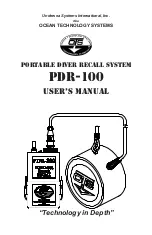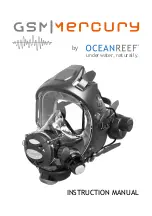
<4. Wiring>
30
IM 01E24A01-01EN
4.2 Cables
4.2.1 Recommended Cable for Excitation,
Power and Input/Output:
JIS C 3401 control cable equivalent
JIS C 3312 power cable equivalent
14 AWG Belden 8720 equivalent
Outer Diameter:
With no gland option:
6.5 to 12 mm (0.26 to 0.47 in.)
With waterproof gland (optional code EG, EG
, EU,
EU
, EW):
For excitation cable:
10.5 or 11.5 mm (0.41 or 0.45 in.)
For power and input/output cable:
7.5 to 12 mm (0.30 to 0.47 in.)
With plastic gland (optional code EP, EP
):
6 to 12 mm (0.24 to 0.47 in.)
Nominal Cross Section:
Single wire; 0.5 to 2.5 mm
2
Stranded wire; 0.5 to 1.5 mm
2
Excitation cable for submersible use and optional
code DHC:
Heat resistant vinyl resin sheath cable
Outer diameter ø 10.5 mm
In case of power cable, Green/Yellow covered conductor
shall be used only for connection to PROTECTIVE
CONDUCTOR TERMINALS. Conform to IEC227,
IEC245 or equivalent national authorization.
On the transmitter side
85 (3.35)
EX1
EX2
EX1
EX2
85 (3.35)
On the sensor side
Unit : mm
(approx. inch)
F0401.ai
Crimp terminal
Figure 4.2.1 Cable Finish for Excitaiton Cable
NOTE
• For excitation cable and power cable, always use a
crimp terminal with an insulation cover.
• Use crimp tools supplied by the manufacturer of the
crimp terminal you want to use to connect the crimp
terminal and cable.
• Use crimp tools that are appropriate for the diameter
of the cable to be connected.
4.2.2 Dedicated Signal Cable (AX01C)
F0402.ai
Outer jacket
10.5 (0.413)
Tape
Shield (C)
Inner jacket
Inner jacket
Shields (SA and SB)
Conductors (A and B)
Unit : mm
(approx. inch)
Figure 4.2.2 Dedicated Signal Cable
The flow signal is transmitted via this dedicated cable.
The cable is constructed with double shielding over the
two conductors, and heat-resistant vinyl is used for the
outer jacket material.
Finished diameter: 10.5 mm (0.413 in.)
Maximum length:
Combination with the AXG1A/AXFA11 transmitter:
200 m (660 ft)
Combination with the AXW4A transmitter:
100 m (330 ft)
Maximum temperature: 80°C (176°F)
IMPORTANT
If the cable is longer than required, cut off any extra
length rather than coiling it up, and terminate the
conductors as shown in Figure 4.2.3.
Avoid using junction terminal boards to extend the cable
length, as this will interrupt the shielding.
















































